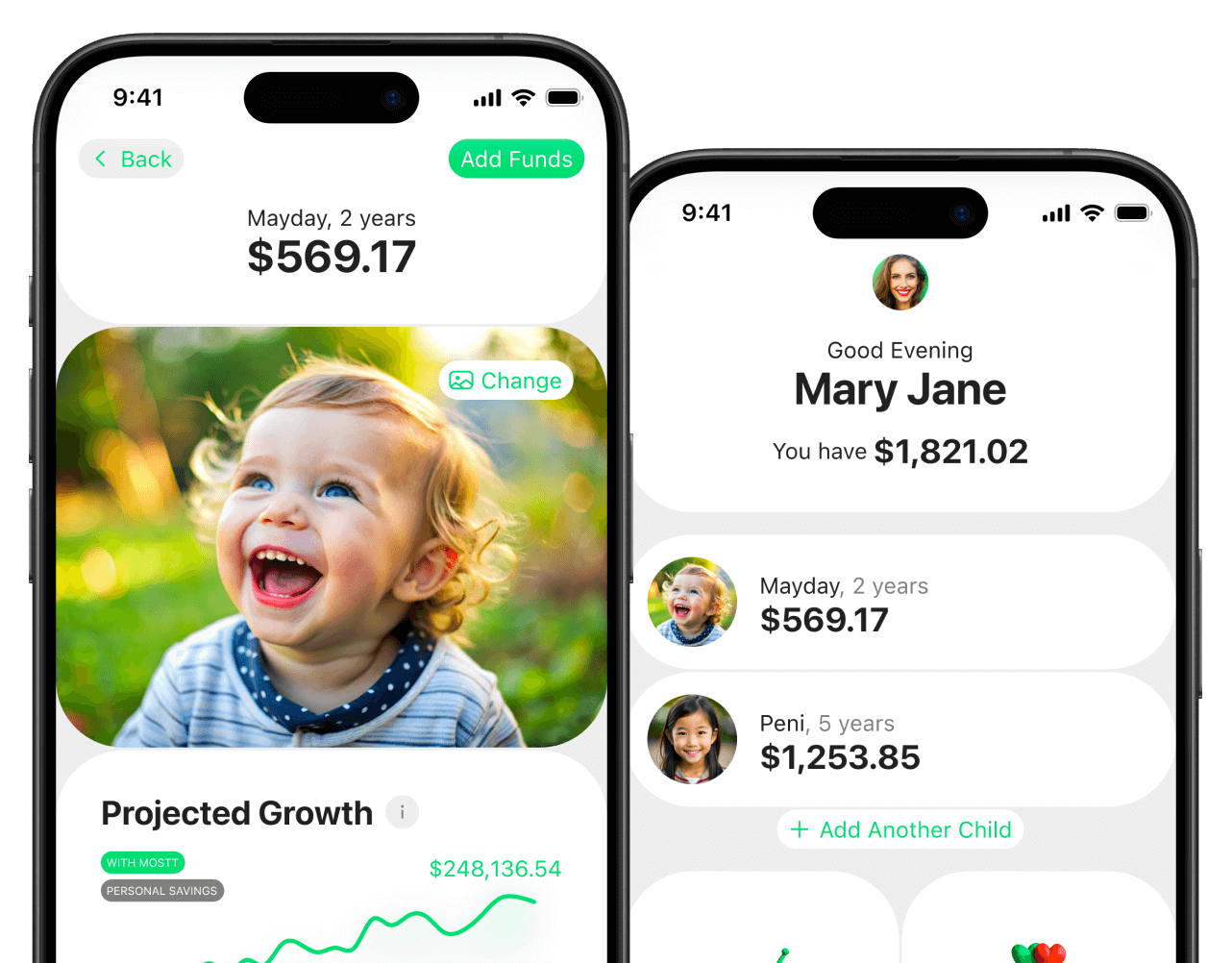Inflation. Even the word can make parents’ eyes glaze over. It’s one of those adult concepts that feels abstract, distant, and frankly a little intimidating. But here’s the thing: inflation affects your family’s everyday life—and understanding it early can give your kids a huge advantage later.
And the best part? You don’t need a classroom or a textbook to teach it. You can show kids the power of inflation (and the counterpower of investing) using ordinary, everyday family moments.
The Cup of Hot Chocolate That Costs More Than Yesterday
Last week, my seven-year-old wanted a hot chocolate after school. We walked into our favorite cafe, and she pointed to the menu with wide eyes: “$4.50 for the small one?!” I had bought the same drink for $3.50 last year.
That’s inflation. Prices creep up, slowly eroding the value of money over time. The dollars you have today buy less than they did yesterday. For adults, this is just part of the background noise of life. For kids, it’s a powerful teaching moment.
How to Turn This Moment Into a Lesson
Ask your child: “Remember when we could get this drink for $3.50? Now it’s $4.50. How many extra dollars would we need to buy the same thing?”
This simple question gets them thinking about the concept of value. Suddenly, inflation is not an abstract number on a chart—it’s their hot chocolate.
For younger kids, you could use coins and cash to make it visual. Hand them the coins, and have them count out the new price. Let them see that what used to cover it now isn’t enough.
Learn more about explaining inflation to children
The Grocery Store Price Hunt
Another everyday moment: your weekly grocery trip. Maybe the cereal box your child loves is now $1 more than last month. Or the apples cost double what they did last year.
Instead of rushing through the checkout line and muttering about rising prices, pause for a teaching moment. Show your kids the old price versus the new price, and let them calculate the difference.
Teaching Tip: Make It a Game
Turn it into a family challenge: “Can you find three items that cost more than last week?” Kids love games, and this helps them see inflation in real-world numbers. It’s also a subtle way to teach them financial awareness and budgeting skills.
Pocket Money and Inflation
Kids who receive allowance or pocket money can experience inflation firsthand. Suppose they get $5 a week, and last year they could buy a toy for $15 after three weeks of saving. Today, that same toy costs $20. Suddenly, saving for three weeks no longer buys the same reward.
This is a golden opportunity to show them why saving alone isn’t enough. Money sitting in a piggy bank loses value over time if prices keep rising.
Actionable Tip: Show Them the Alternative
Introduce them to investing—even in a small, family-friendly way. For example, you can open a custodial investment account for your child, invest in a diversified portfolio, and track how their money grows over time. Teach them the difference between saving (holding cash) and investing (making money work for you).
Storytime: The Lemonade Stand That Went Wrong
Think about a summer lemonade stand. Your kids save up, spend $10 on lemons and sugar, and sell lemonade for $20. Last summer, that $20 could buy three action figures. This year, the same $20 buys only two because prices went up.
Kids see firsthand that the money they earn today doesn’t go as far as it used to.
Turn It Into a Lesson in Investing
Ask them, “What if we had invested that $10 in a way that it grew instead of just sitting in a jar?” This is where you can introduce the idea of compound interest. Show them how even a small investment could grow over time, outpacing inflation and letting their money buy more in the future.
Read about how compound interest fights inflation
Everyday Conversations About Rising Costs
You don’t need elaborate setups. Even casual conversations at home work:
-
“I noticed the price of our favorite pasta went up again. That’s inflation.”
-
“The movie ticket is $2 more than last year. Our money doesn’t stretch as far anymore.”
When kids hear you talk about it naturally, it becomes part of their financial vocabulary. They’ll start noticing patterns themselves and making the connection that money isn’t just numbers—it represents what it can buy.
Make It Relatable
Relate it to things they care about. “If we want to go to the theme park next summer, how much should we save to keep up with rising ticket prices?” Suddenly, budgeting and financial planning aren’t abstract—they’re directly connected to their goals.
Here’s a simple guide to teaching kids about money
The Power of Investing
All of these everyday examples show the downside of inflation: money loses value. But here’s the silver lining—investing can beat inflation over time.
When you invest in stocks, bonds, or diversified funds, your money has the potential to grow faster than prices rise. Teaching your kids this principle early can change their financial trajectory entirely.
Family-Friendly Investment Ideas
-
Custodial Accounts: Parents can open accounts that children control when they reach adulthood.
-
Index Funds or ETFs: Simple, diversified ways to grow money.
-
Dividend Stocks: Show how reinvested dividends can compound over time.
The lesson is simple: the earlier your kids understand the value of investing, the better they can protect and grow their money against inflation.
Make It a Habit, Not a Lecture
The key to teaching kids about inflation and investing is consistency. It doesn’t have to be a formal lesson. Use everyday moments:
-
The grocery store
-
Pocket money
-
Lemonade stands
-
Family shopping trips
Every interaction reinforces a powerful financial principle: money has value, prices rise, and smart investing protects that value.
Quick Tips for Parents
-
Visualize Money: Use coins, bills, or charts to show rising prices.
-
Engage in Conversations: Talk about real-life examples of price changes.
-
Show the Difference Between Saving and Investing: Let kids see their money grow through investing.
-
Relate to Their Goals: Make lessons tangible by connecting them to toys, treats, or trips.
-
Celebrate Wins: When they understand the concept or see their investments grow, celebrate it.
The Big Picture
Inflation isn’t just an economic term. It’s a reality that affects families every day. And while it might feel like a scary, uncontrollable force, teaching kids to understand it—and more importantly, to invest against it—gives them tools for a lifetime of financial security.
By turning ordinary family moments into teaching moments, you’re doing more than explaining inflation. You’re showing your kids how to take control of their financial future.
And here’s the most powerful part: they’ll carry these lessons for the rest of their lives. They’ll understand that money is more than cash—it’s opportunity, and the earlier they start, the stronger that opportunity becomes.
Want to help your kids beat inflation and start investing? Check out Mostt’s family-friendly investment tools to start small, start early, and watch their money grow.
If you want, I can also create a slightly longer, fully SEO-optimized version with natural subheadings, bolded key points, and internal links to Mostt blog posts, which will hit 1,700–1,800 words and be ready to post.




